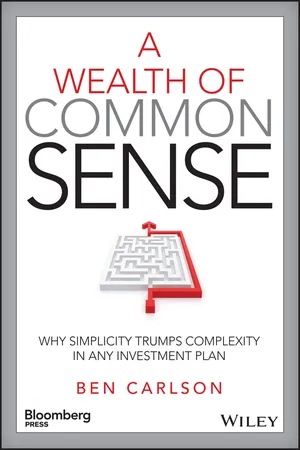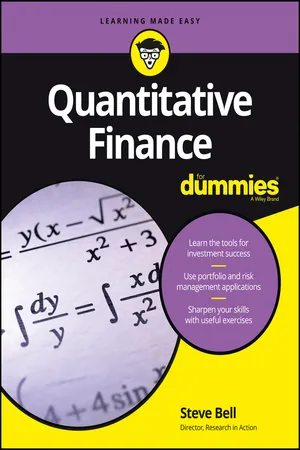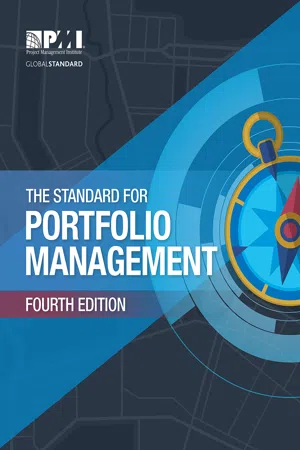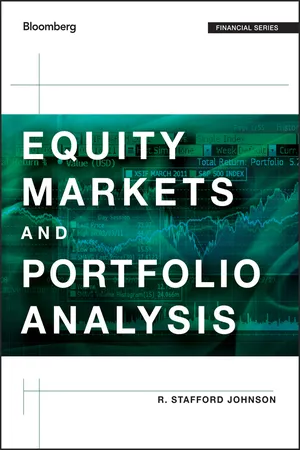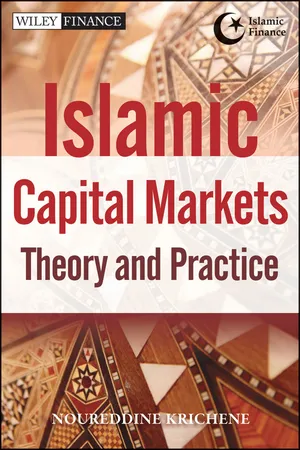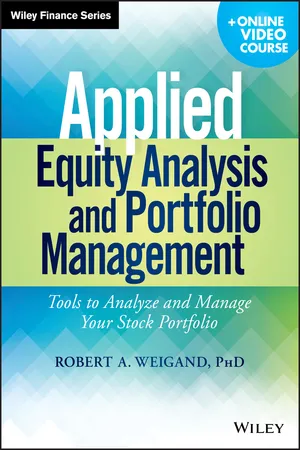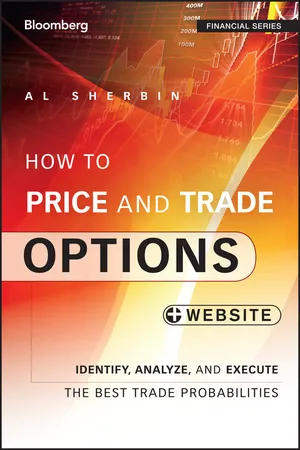Business
Portfolio Risk
Portfolio risk refers to the potential for loss or underperformance of a collection of investments. It is influenced by the individual risks of the assets within the portfolio as well as their correlations. Diversification and risk management strategies are used to mitigate portfolio risk and optimize the balance between potential returns and potential losses.
Written by Perlego with AI-assistance
Related key terms
Related key terms
1 of 4
Related key terms
1 of 3
10 Key excerpts on "Portfolio Risk"
- eBook - ePub
Just One Thing
Twelve of the World's Best Investors Reveal the One Strategy You Can't Overlook
- John Mauldin(Author)
- 2011(Publication Date)
- Wiley(Publisher)
Risk is uncertainty of a loss. Without uncertainty, the situation already would be a loss and not a risk. Further, without the possibility for loss—if the uncertainty is only about the size of your gain—there is hardly risk. Thus, despite all of the ways that risk can be measured and assessed, risk is the likelihood that your investment will lose money. It is often measured in terms of probability and magnitude. For example, an investment might have a 20 percent chance of a loss. Further, the investment could have a risk of losing 50 percent of the investment. As the probability of a loss increases and as the magnitude of potential loss increases, investments become more risky. The result is that investors should require greater potential for returns as risk increases.Assessed together, returns and risk are elements that investors consider to determine the price and terms of an investment. If the assessment of return and risk is accurate, a properly structured portfolio of investments should deliver its expected return. Bear in mind, however, that on the other side of your transactions may be someone as diligent as you. As a buyer, you will believe that you have found great opportunity; the seller on the other side of your transaction believes that the opportunity was not worth the price. This capitalistic tension will be similar when you are the seller. Therefore, be careful to use the diligence of a business decision to accurately assess the risks and potential returns.MODERN PORTFOLIO MISUNDERSTANDINGSTraditional portfolio logic holds that stocks are riskier than bonds since they have a greater potential for loss. An efficient market, as a result, will price stocks to deliver higher returns than bonds over the long term. Therefore, the logic goes, investors should increase their stock holdings in order to generate higher returns. For risk-averse investors, an efficient mix of stocks and bonds offers the best characteristics of return and risk. - eBook - ePub
A Wealth of Common Sense
Why Simplicity Trumps Complexity in Any Investment Plan
- Ben Carlson(Author)
- 2015(Publication Date)
- Bloomberg Press(Publisher)
CHAPTER 3 Defining Market and Portfolio RiskThe stock market is a giant distraction to the business of investing.—John BogleIn the 1960s there was a French film called The Lovers (Les Amants). It turned out to be a little risqué for some people in the Midwest. The state of Ohio ruled the film to be obscene and pornographic. The case eventually made it all the way to the Supreme Court, where it was ruled that the movie was not, in fact, too obscene to be viewed by the public. Justice Potter Stewart had this to say when describing the film and pornography in general, “I shall not today attempt further to define the kinds of material I understand to be embraced within that shorthand description [‘hard-core pornography’], and perhaps I could never succeed in intelligibly doing so. But I know it when I see it, and the motion picture involved in this case is not that.”1Most investors assume that risk is a form of “I know it when I see it.” Unfortunately, risk is nearly impossible to define because it has so many permutations. To some it's volatility. To others it's losing money. Longevity risk—outliving your money—is probably the biggest risk of all. Then you have all of the risks within each investment class: duration, interest rates, earnings shortfalls, recessions, permanent impairment, innovation, competition, and so on. The list could seemingly go on forever.If there is an ironclad rule in the world of investing, it's that risk and reward are always and forever attached at the hip. You can't expect to earn outsized gains if you don't expose yourself to the possibility of outsized losses. If you are seeking the safety of your principal, you have to be willing to give up on the prospect of higher returns. If you are seeking to compound your wealth through higher investment returns, you have to be willing to let go of the idea that your money won't fluctuate and possibly fall in the short to intermediate term. You have to seek a balance within your own portfolio, but understand that there is no such thing as a free lunch. - eBook - ePub
- Steve Bell(Author)
- 2016(Publication Date)
- For Dummies(Publisher)
Part 5Risk and Portfolio Management
IN THIS PART … Look at quantitative finance risk with the standard deviation of the returns of a portfolio of financial assets. Control risk with derivatives contracts. Choose simple as well as more complex ways of controlling risk. Diversify holdings to reduce risk in a portfolio. Measure risk using the Value at Risk (VaR) measure often required by regulators.Passage contains an image Chapter 13
Managing Market Risk
IN THIS CHAPTER Looking at investment risk Setting stops Balancing with hedges Gambling strategies Using utility functions Estimating covarianceMarket risk is what happens when a market price goes against you, whether it goes up or down. Credit risk is a similar form of financial accident that happens when a company or nation defaults on a loan. Banks are primarily exposed to credit risk. For financial institutions that invest or trade in financial assets on behalf of others, managing market risk is a crucial task.Market risk is distinct from operational risk, which is about failures with people, processes and systems. If market risk gets out of hand, it can lead to financial instability , which happens when firms are no longer able to perform critical financial services such as buying and selling shares. This chapter introduces ideas about market risk and the following two chapters extend the analysis with detailed ways of building portfolios to reduce risk.Investing in Risky Assets
The reason for investing in risky financial assets is to make a profit, or to earn a return in excess of what you can get by depositing money in a bank or lending money to a government in the form of short-term loans (treasury bills). Low or even negative deposit rates can intensify the search for investments with higher risk and higher return. Indeed, the purpose of low or negative interest rates is to encourage money to move out of safe bank deposits into business investment so as to stimulate the economy. - eBook - ePub
Identifying and Managing Project Risk 4th Edition
Essential Tools for Failure-Proofing Your Project
- Tom Kendrick(Author)
- 2024(Publication Date)
- AMACOM(Publisher)
The portfolio management process seeks to select an optimal, or at least acceptable, mix of projects to undertake. Although risk is only one of the criteria applied to the decision process, it is a central one because the portfolio process is an important tactic for minimizing risks for the organization.For each newly proposed or continuing project in a proposed portfolio, there are three possible outcomes.- The project is accepted into the portfolio, becoming or remaining an active project.
- The project is accepted, but only after making changes (to scope, schedule, or resources). Some projects may be lowered to an acceptable level of risk through “transfer,” by purchasing insurance to deal with excessive financial exposure, by converting the project to a joint venture and sharing the risks (and rewards) with a partner organization, or through other adjustments.
- The project is rejected. Some (perhaps most) project ideas should be turned down or postponed for reconsideration at a later time.
Before finalizing a list of projects as the “in plan” portfolio, ensure that both the individual project risks and the overall cumulative risks have been thoroughly evaluated and the candidate list is consistent with the organization’s risk tolerance. Identify any particularly risky projects that are accepted into the portfolio, and ensure that the organizational decision-makers responsible for the portfolio will have adequate visibility of project progress and will monitor it at least monthly.Portfolio decisions are never permanent; successful portfolio management must periodically revisit the selection process, including risk assessment. Portfolio reviews are typically conducted about once per quarter, and may also be needed following the completion of major projects. Portfolio reviews revisit the portfolio assumptions and criteria and manage Portfolio Risk by considering project status information, especially data on troubled projects. - eBook - ePub
- (Author)
- 2017(Publication Date)
- Project Management Institute(Publisher)
8Portfolio Risk MANAGEMENT
The primary objective of Portfolio Risk Management is to make sure that portfolio components will achieve the best possible success according to the organization's strategy and business model. From a risk perspective, this is done through the balancing of risks, both positive (opportunities) and negative (threats). The managing of risks below the portfolio level is usually thought of as exploiting opportunities and avoiding threats. However, when dealing with complexity at the portfolio level, the simple approach of avoiding threats and exploiting opportunities may not result in a complete balancing of Portfolio Risks. Portfolio Risk Management aligns portfolio components, organizational strategy, the business model, and environmental factors toward the objective of portfolio value optimization and results in a synchronized portfolio execution across portfolio components. Risk and change should be embraced and navigated within an environment of nonlinear interactions. Within this nonlinear environment, specific portfolio-level risks are addressed by the portfolio management team with the goal of optimizing value for the organization. Risk and change are thus embraced and navigated within an environment of nonlinear interactions with the goal of maximizing value for the organization.The following major sections are addressed:8.1 Overview 8.2 Guiding Principles 8.3 Portfolio Risk Management 8.4 Key Planning Elements 8.5 Portfolio Risk Management Framework and Portfolio Risk Management Plan8.1 OVERVIEWRisk management involves the identification and balancing of risk factors (environmental, human, legislation, compliance, etc.) to efficiently and effectively enable portfolio value delivery. At and above the portfolio level, value is measured by how well the portfolio supports organizational strategic goals and objectives. These goals and objectives are achieved, in part, by aligning responsibility and accountability for risk management with the organizational business model. The dependencies among diverse risk factors result in emergent risks that require a holistic Portfolio Risk Management approach. Therefore, a simple decomposition approach to risk management, as seen at the program and project level, is not appropriate when dealing with portfolio-level risk factors. - eBook - ePub
- R. Stafford Johnson(Author)
- 2014(Publication Date)
- Bloomberg Press(Publisher)
CHAPTER 7 Portfolio EvaluationIntroduction
In the last chapter, we examined how to measure the return and risk of stocks. In an efficient market, investors, however, either individually or through an investment fund, can attain better return-risk opportunities by investing in a portfolio. In this chapter, we analyze portfolios, with the emphasis being on stock portfolios.Portfolio analysis consists of the evaluation and selection of the financial assets that makeup the portfolio. As with individual security evaluation, stock portfolio evaluation entails measuring the characteristics of the portfolio, with the most important properties being the portfolio expected rate of return and risk. Portfolio selection, in turn, involves finding what proportion of investment funds to allocate to each security to give the portfolio either the maximum expected return for a given risk or the minimum risk given a specified return. In this chapter, we evaluate portfolios of risky stocks in terms of their expected portfolio return and risk, and in Chapter 8, we focus on portfolio selection. We begin by examining the relationship between portfolio return and risk and the relationship between Portfolio Risk and number of securities in the portfolio. Next, we introduce a risk-free security and show how investors can obtain different return-risk combinations with different allocations of their investment funds to the risk-free security and a portfolio of risky stocks.Portfolio Return and Risk
A portfolio can be described by the proportion of investment funds allocated to each security in it. For example, suppose an individual invested $1,000 in three stocks, denoted X1 , X2 , and X3 . Her stock portfolio would be described by the proportion of investment funds ($1,000), denoted as wi - eBook - ePub
Investments
Principles of Portfolio and Equity Analysis
- Michael McMillan, Jerald E. Pinto, Wendy L. Pirie, Gerhard Van de Venter(Authors)
- 2011(Publication Date)
- Wiley(Publisher)
CHAPTER 5 Portfolio Risk AND RETURN: PART I Vijay Singal, CFA Blacksburg, VA, U.S.A. LEARNING OUTCOMES After completing this chapter, you will be able to do the following:- Calculate and interpret major return measures and describe their applicability.
- Describe the characteristics of the major asset classes that investors would consider in forming portfolios according to mean–variance portfolio theory.
- Calculate and interpret the mean, variance, and covariance (or correlation) of asset returns based on historical data.
- Explain risk aversion and its implications for portfolio selection.
- Calculate and interpret portfolio standard deviation.
- Describe the effect on a portfolio’s risk of investing in assets that are less than perfectly correlated.
- Describe and interpret the minimum-variance and efficient frontiers of risky assets and the global minimum-variance portfolio.
- Discuss the selection of an optimal portfolio, given an investor’s utility (or risk aversion) and the capital allocation line.
Construction of an optimal portfolio is an important objective for an investor. In this chapter, we will explore the process of examining the risk and return characteristics of individual assets, creating all possible portfolios, selecting the most efficient portfolios, and ultimately choosing the optimal portfolio tailored to the individual in question.During the process of constructing the optimal portfolio, several factors and investment characteristics are considered. The most important of those factors are risk and return of the individual assets under consideration. Correlations among individual assets along with risk and return are important determinants of Portfolio Risk. Creating a portfolio for an investor requires an understanding of the risk profile of the investor. Although we will not discuss the process of determining risk aversion for individuals or institutional investors, it is necessary to obtain such information for making an informed decision. In this chapter, we will explain the broad types of investors and how their risk–return preferences can be formalized to select the optimal portfolio from among the infinite portfolios contained in the investment opportunity set. - eBook - ePub
Islamic Capital Markets
Theory and Practice
- Noureddine Krichene(Author)
- 2012(Publication Date)
- Wiley(Publisher)
Figure 2.9 . The vertical axis shows the variance of the portfolio return. The variance of the portfolio return represents the total risk for portfolio (systematic plus nonsystematic). The horizontal axis shows the number of holdings of different assets. As can be seen, as the number of assets increases, the level of nonsystematic risk is almost eliminated.FIGURE 2.9 Diversification and Portfolio RiskThe Capital Asset Pricing Model (CAPM)
The capital market line represents an equilibrium condition in which the expected return on a portfolio of assets, made of a combination of the market portfolio and a risk-free asset, is a linear function of the expected return of the market portfolio. Buying a stock, which is already included in a market portfolio, is a different investment strategy from buying portfolios located on the capital market line. Individual assets do not fall on the capital market line. An investor is interested in how an individual stock performs in relation to the market portfolio. If every investor’s risky portfolio is the same, this portfolio is simply the portfolio of all risky assets in the market. It is called the market portfolio M . A corollary of this is that the riskiness of any individual asset i is different from its total risk and can be measured by , the covariance between the returns on asset i and the returns on the market portfolio. We standardize this measure by dividing by Var (RM), the variance of returns on the market portfolio. This standardized measure is termed an asset i ’s beta, and is given by the formula:(2.47)Sharpe (1970) demonstrated that the following equilibrium relationship has to hold for individual assets included in a market portfolio:8(2.48)The expected return of an asset i, E (Ri), is linear in its market risk - eBook - ePub
Applied Equity Analysis and Portfolio Management
Tools to Analyze and Manage Your Stock Portfolio
- Robert A. Weigand(Author)
- 2014(Publication Date)
- Wiley(Publisher)
We learned why the purely mechanical aspects of diversification only reduce a portfolio's firm-specific risk, leaving the portfolio's macroeconomic risk exposure unaffected. We also observed that when we diversified among stocks with low return correlations portfolio volatility could be further reduced because stocks with low return correlations tend to exhibit different responses to macroeconomic news. In this section we will further explore a portfolio's exposure to macroeconomic risk by introducing a new risk metric known as beta. While the Markowitz framework is valuable for understanding how diversification works, and provides the most accurate calculations of portfolio volatility, there is something unsatisfying about the Markowitz depiction of Portfolio Risk. When managing even a modest-sized portfolio, the Portfolio Risk calculations can only be completed using Excel, or professional risk-management software. While this does not present a problem from a computational standpoint, it does mean that a portfolio manager has to sacrifice some intuition when thinking about the risk and expected return of the stocks in a portfolio—there are simply too many variables to hold in one mental snapshot. Fortunately, our risk story does not end with Markowitz. A Stanford professor named William Sharpe (who shared the Nobel Prize with Markowitz in 1990) added further to our understanding of risk and expected returns with several contributions, most notably the capital asset pricing model (CAPM), which we've already used to calculate equity expected returns in Chapters 3 through 5. We are going to focus on an important input to the CAPM, the index of stock and Portfolio Risk known as beta - eBook - ePub
How to Price and Trade Options
Identify, Analyze, and Execute the Best Trade Probabilities, + Website
- Al Sherbin(Author)
- 2015(Publication Date)
- Wiley(Publisher)
CHAPTER 9 Portfolio ManagementWe have spoken about how to choose individual trades, how to best execute your trades, and when to exit trades both as winners and losers. Once you have a number of trades on your sheets, what should you do to control your overall portfolio’s risk? How do you know what the overall risk really is? This is perhaps the most difficult area of trading. There are many schools of thought on the issue. We will begin our discussion by exploring a more academic viewpoint on the issue and proceed to a more practical approach. I must caution you that for every educator you read or listen to, you will more than likely get a different answer as to the best way to control your risk. And even if all educators had a similar answer, each individual trader has his or her own risk appetite, financial situation, and pain threshold for withstanding losses. Therefore, there is no “one size fits all” solution. What I will deliver to you is a solid framework for how to view your risk, some potential trade ideas to help mitigate your portfolio’s risk, and some rules of thumb as to how to size your trades. You may be wondering why sizing your trades appears in a portfolio management discussion. In actuality, proper trade sizing is probably the single most important area of risk management. Let us begin by talking a bit about risk and diversification of risk.Two Types of Risk
Most people hear the term risk and think it refers to how much they can lose. Though that is not entirely wrong, there is much more to the story. And knowing a few more of the details will help you better understand the nature of your portfolio. So, we will revert to a bit of “Financial Management 101” speak.People, by nature, are risk-averse. Most of us would prefer not to take any risk, all else being equal. There are those few daredevils out there who take on risk just for the sake of the rush it provides. I would highly advise those individuals to stay away from trading. They will get their rush and then the call from their broker letting them know their account is closed due to lack of funds. A rational individual takes on risk only if he feels appropriately compensated to do so. We call this compensation risk premium
Index pages curate the most relevant extracts from our library of academic textbooks. They’ve been created using an in-house natural language model (NLM), each adding context and meaning to key research topics.
Explore more topic indexes
Explore more topic indexes
1 of 6
Explore more topic indexes
1 of 4

